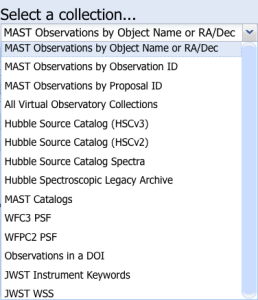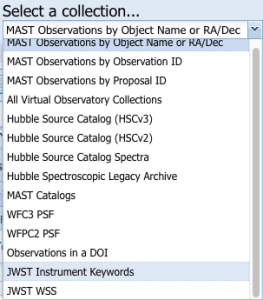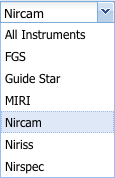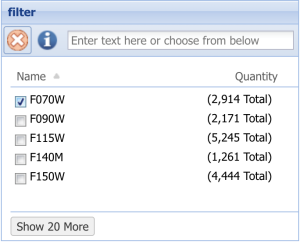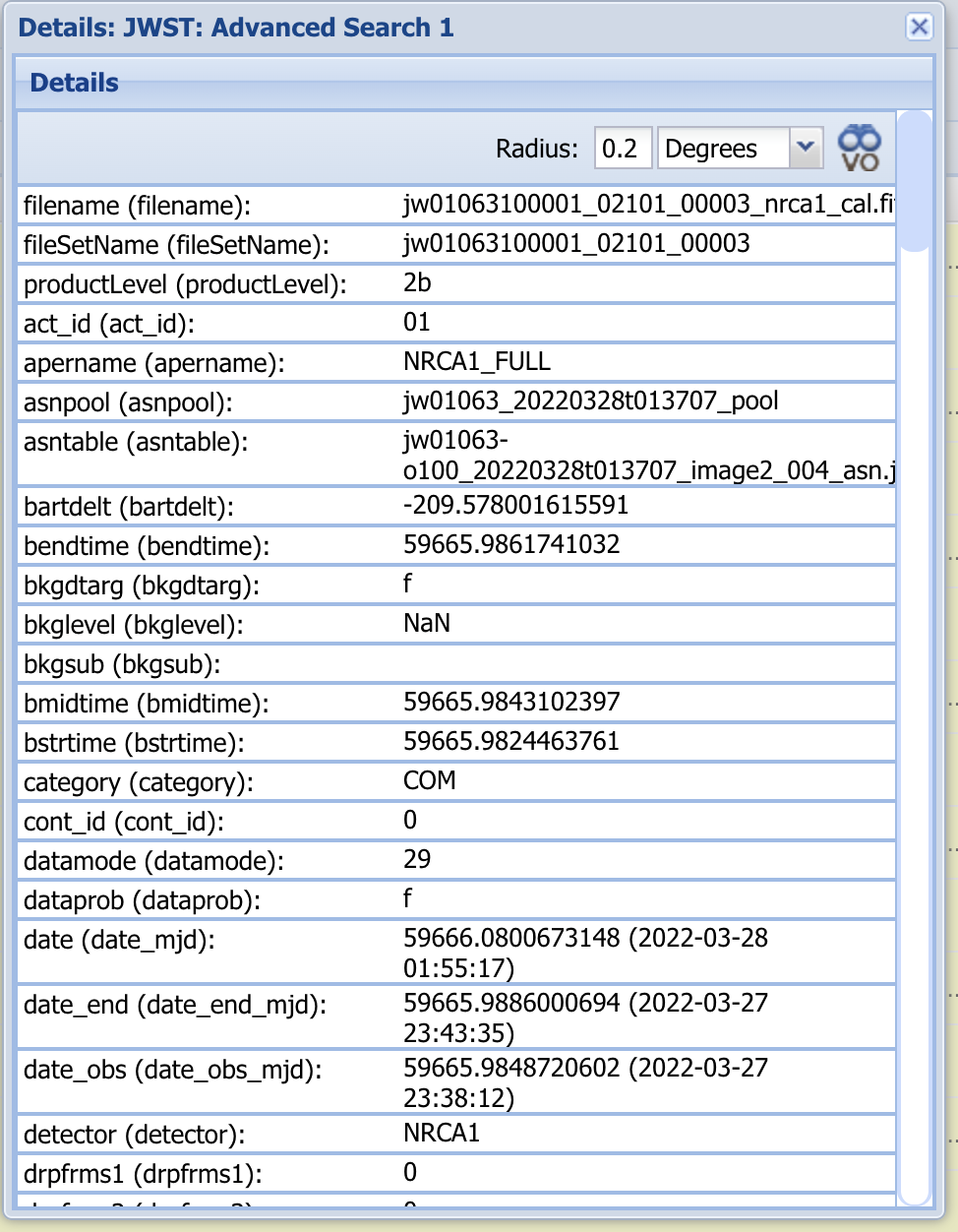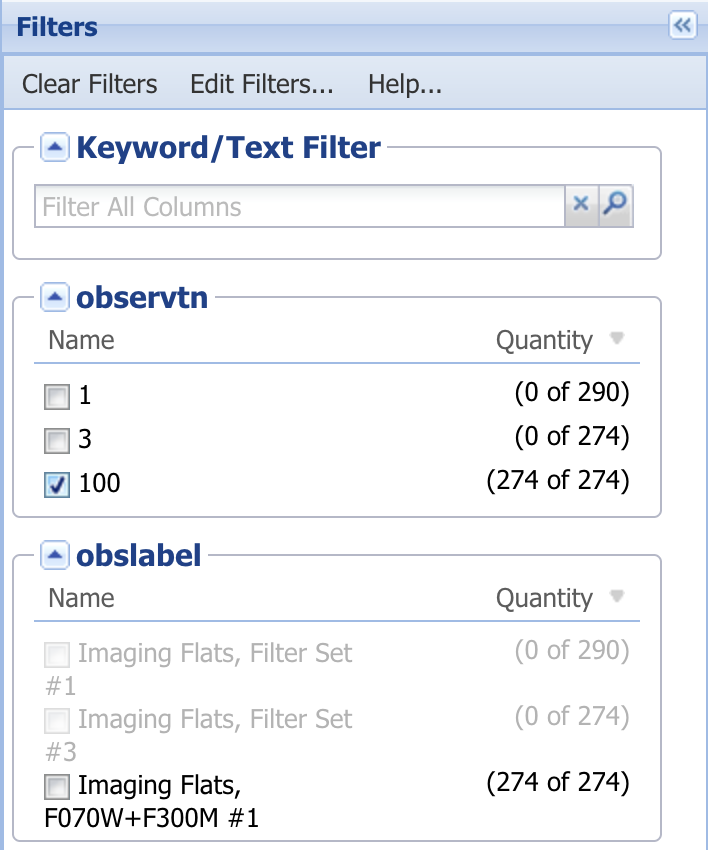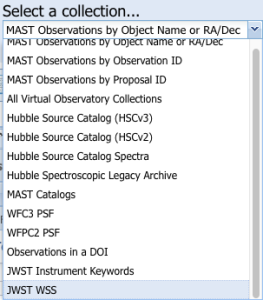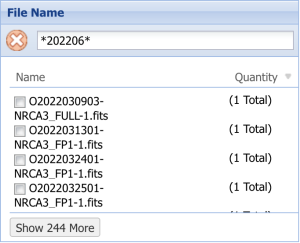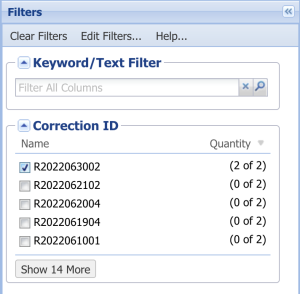The MAST Portal is a web application that can search for data products from any hosted mission, including JWST. The MAST Portal Guide provides step-by-step instructions for most searches. This page reviews basic searches, and describes in more detail JWST-specific searches.
On this page...
Context
Any search with the MAST Portal requires first specifying the collection over which to search. Select the collection with the drop-down menu at the top-left of the Portal interface:
See the Selecting Collections section of the Basic Search chapter in the Portal Guide for an explanation of the various collections.
Search by Object Name or Coordinates
The most common search in MAST is to specify either an object name, or a location on the sky in equatorial coordinates. See the Basic Search chapter in the Portal Guide to view the accepted formats for target names and for coordinate syntax. In brief, after selecting the collection:
- Enter a target name or coordinates into the dialog:
- Click the Search button:
Note that you may want to specify a search radius in the dialog (e.g. "ngc2024 r=1m") if the default of 0.2° returns too many results.
Advanced Search
Wide-field Slitless Spectroscopy, performed by NIRISS and NIRCAM, produces an extraordinary number of search results (mostly extracted spectra). Use caution when searching for these results in the Portal, as it may result in time-out issues. Instead, the MAST API offers a more reliable way to to get the data; see the large downloads Jupyter Notebook for an example of how to handle large queries.
An advanced search is really an elaboration on the basic search by name or position, but provides 30 additional attributes for a finer-grained selection. In brief, after selecting the collection
Click the Advanced Search link, which brings up a new window (see the Advanced Search article in the Portal Guide)
- Select the filter columns of interest
- Fill in the dialog boxes (or select enumerated values) in each filter of interest
- Execute the search
An advanced search is a good choice if, e.g., you want to find data for a particular JWST program: select JWST in the Mission filter, and enter the 5-character program number in the Proposal ID filter.
Search Results
After a successful search the Portal returns a table of matches to Observations. Each match appears as a row in a table, and each row represents multiple data products. See the layout in Figure 1 of the Field Guide to the Portal chapter of the Portal Guide.
Search by JWST Instrument Keywords
The JWST Instrument Keyword search will select files that match header keyword values (or ranges of values). See the JWST Keyword Dictionary for a complete list of the scores of available keywords for each instrument.
Only the highest-level products will be returned
The keyword search results table includes only the highest-level FITS products that were produced. That is, it will not include Level-1b files if a corresponding Level-2 file was created, although it will still show Level-2b files if a corresponding Level-3 file was created. It will not show non-FITS science products such as source catalogs in any case. To retrieve lower-level products, use the Portal Search for Observations.
A brief description about the JWST data product levels can be found in the Science Data Products article; see also the JWST processing pipeline page for more detailed information.
Example Search by Keywords
Follow the instructions below to search by specific keyword values. This example shows how to search for NIRCam observations in the F070W filter for JWST Program 1063, and then refine the results to display only those files from Observation 100.
| Instruction | Notes | |
|---|---|---|
| 1 | Select 'JWST Instrument Keywords' from the Select a collection… drop-down menu on the upper-left of the Portal interface. | |
| 2 | Select an instrument (in this example, Nircam) from the Instrument pull-down menu underneath the collection drop-down menu. You can also select 'All Instruments' and further refine results in step 4. | |
| 3 | Click the Advanced Search button on the right, which will bring up a new window. | |
| 4 | Select parameters or ranges for one or more filter menus to limit or expand the search. For instance, specify the JWST Program ID in the Proposal ID panel and tick the filter name (in this example, If you selected 'All Instruments' in step 2, you can use the 'instrument' filter to refine results down to NIRCam at this stage. | |
| 5 | Now click the Search button in the upper-left of the Advanced Search window. | |
| 6 | Evaluate the search results grid (i.e., the table of matching rows). | |
| 7 | Optional: Click an information icon in a table row for additional details about that file. | |
| 8 | Optional: Down-select results in the grid using one or more of the Filters to the left of the results table. When specific filters (e.g., Observation 100) are applied, the results table will display observations that match those selections. | |
| 9 | Optional: Click the Edit Columns button at the upper-left of the results table (see Step 6 above) to open a menu, where you can select which columns are displayed in the results table. The default is to display columns for all keywords, which requires a lot of sideways scrolling to find those of interest. | |
Search for Wavefront Products
JWST's primary mirror (the Optical Telescope Element, OTE) has eighteen individual segments. To enable the segments to act like one large primary mirror and to have their wavefronts match correctly, the initial best on-orbit alignment is established during JWST commissioning, and periodically thereafter. Wavefront sensing results include Optical Path Difference (OPD) files, which are available in the MAST Portal. It is possible to use these files with mission software (Webb PSF) to evaluate the quality of the imaging for an instrument and aperture of interest.
Bring up the Portal interface and follow the steps below:
Instruction | Notes | |
|---|---|---|
| 1 | Select 'JWST WSS' from the 'Select a collection…’ pull-down menu on the upper-left. WSS refers to the Wavefront Sensing Software subsystem for JWST. | |
| 2 | Click the Advanced Search box to the right. | |
| 3 | Select parameter values for one or more filter menus to restrict the search. Note: wildcards are allowed in text boxes. | |
| 4 | Click the Search button in the upper-left of the window. | |
| 5 | Optional: Down-select results in the grid using one or more of the Filters to the left of the results table, which when applied will display only the matching observations. | |
| 6 | Download the products by:
See Data Retrieval article for more details about downloading data. |
